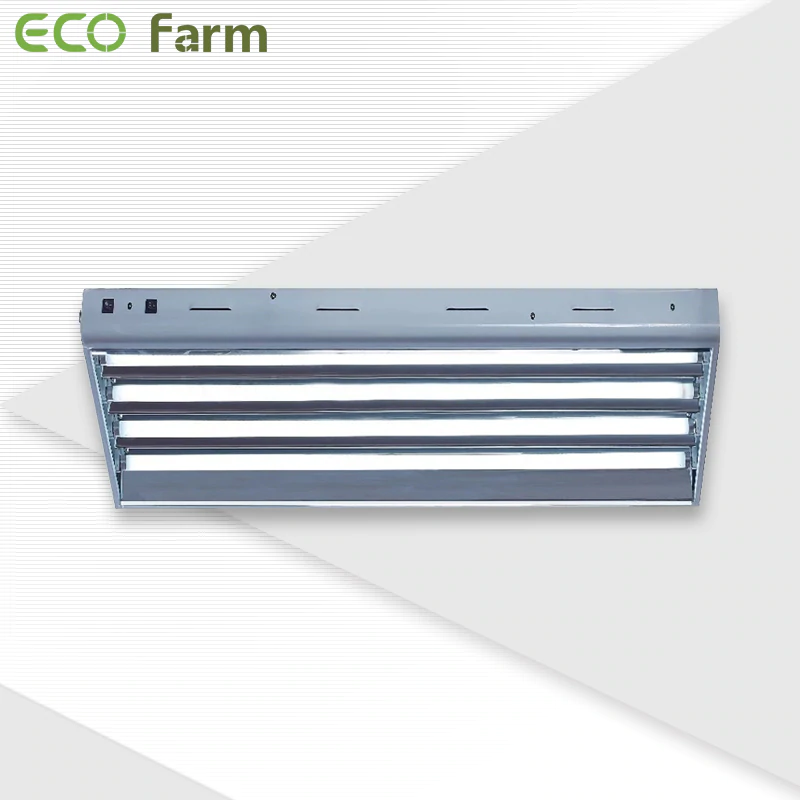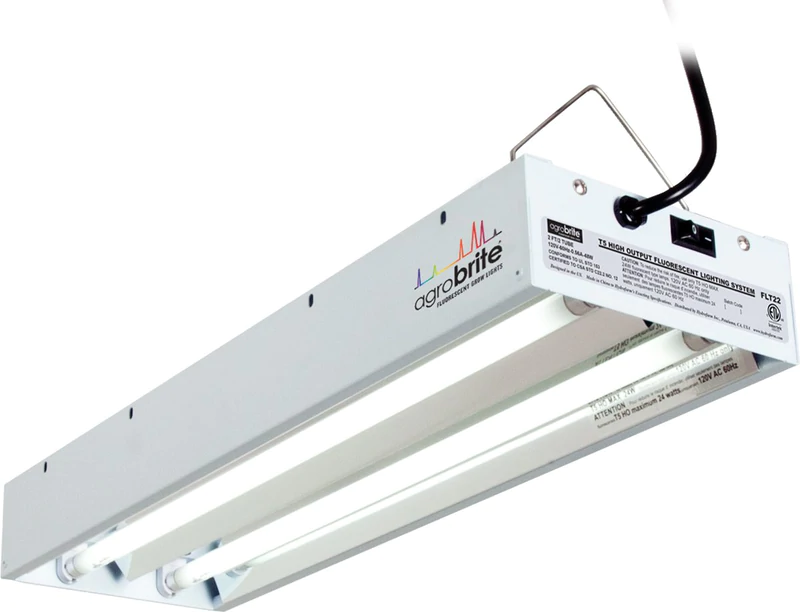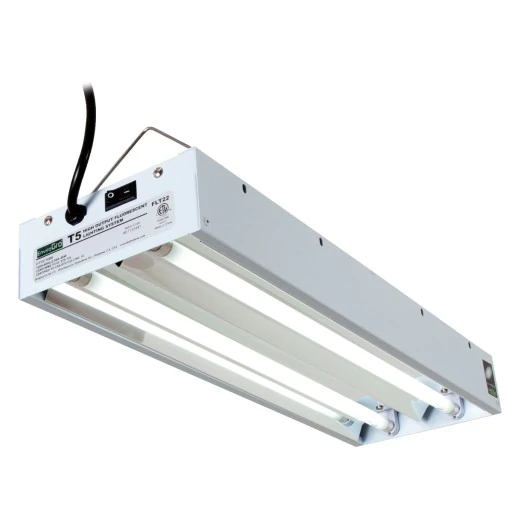T5 vs. T8: Which Grow Lights to Choose? (2022 Updated)
When growing indoors, you have a lot to consider. There’s humidity, temperature, soil, etc. — and this can be even more complicated if you’re working with hydroponics. One of the most significant considerations is your grow light, and indoor growers always ask about T5 vs. T8 lighting. In this article, we’re looking at the differences between these two options, so you can decide what’s best for your indoor garden.
Choosing the right indoor lighting source can mean the difference between a thriving garden and a disappointing one. A grow light is a multi-purpose light bulb that mimics the energy and influence of UV rays or sunlight exposure on plants at all stages of their development. This light allows users to cultivate plants indoors or in regions with unideal weather.
While most artificial alternatives to sunlight are not prohibitively expensive, choosing the incorrect one could waste time and effort for indoor growing. Accordingly, it’s critical to compare the T5 and T8 grow lights to determine which is best for you.
So, what are the most significant differences between these two technologies? Which one is better for your garden? We’ll consider some of the most crucial factors and differences between these options to make an informed decision on which one to buy.
T5 vs. T8 — What’s the Difference?
For starters, T8 bulbs have a diameter of eight-eighths of an inch (equivalent to 1 inch). The is what the “8” in its name means. T5 bulbs, as you might have guessed, are five-eighths of an inch thick, making them the thinner option. Because the two tubes are not interchangeable, this is a crucial consideration when looking at the fixture you want over your garden.
T5 and T8 tubes are available in various color temperatures and lumen outputs. Suppose you’re looking for fluorescent tubes to use in an office devoid of natural light, for example. In that case, you’ll want to choose one with a lower lumen output, a warmer color temperature, or both, depending on the environment. Excessive light output or a color temperature that’s too cool can harm your plants and limit their growth.
ECO Farm T5 24W Fluorescent Grow Light

Features:
This ECO Farm t5 Grow Light comes with (4) 24W T5 High Output LED Tubes and is designed for horticultural use. This fixture mimics natural sunlight conditions and is ideal for all stages of plant growth. Save over 60% on your lighting and HVAC bills compared to traditional fluorescent lamps. Red and deep red wavelengths increase the rate of photosynthesis and accelerate plant growth through the Emerson effect. With an extra-long 30,000-hour lifespan, this grow light is perfect for beginner or professional growers. ECO Farm T5 fluorescent lamps can be daisy-chained to matching fixtures for virtually unlimited expansion. Mount the light in any indoor location using the wire rack provided.
Hydrofarm Agrobrite FLT22 T5 Fluorescent Grow Light

Features:
Hydrofarm’s new Designer T5 system provides performance, flexibility and high lumen output in any growing environment. These daisy chain systems allow you to choose from a variety of hanging configurations to suit your garden design. They combine German mirrored aluminium with energy efficient/high output T5 bulbs that emit twice as much light as normal fluorescent systems.
EnviroGro T5 2FT 2 Tube Fixture w/bulbs

Features:
The EnviroGro T5 luminaire is designed to be cost-effective, with a solid powder-coated steel frame and built-in UL listed ballast. The reflective material is specular aluminum, which reflects almost all light in one direction. This increases light intensity and provides better power yield per watt. EnviroGro luminaires can even be hung horizontally, vertically or overhead, increasing planting possibilities and easily illuminating plants from all angles. The luminaire is so efficient that it produces twice as much light energy as other fluorescent systems.
T5 or T8 Grow Lights: Which Is Better?
T8 grow lamps are preferred by many indoor gardeners because they provide more overall lumens, have a longer life, and are more efficient than standard fluorescent bulbs. However, T5 high-output bulbs have an even more significant advantage in being roughly 9% more efficient than T8 bulbs, allowing them to generate more light in a smaller space while using less wattage (75 to 90 lumens per watt). T5 also has a high color rendering index (CRI), making them more visually appealing.
Light Spectrum & Wavelengths
While many of the best grow lights give off the full spectrum, others primarily produce a blue or red spectrum light. The ranges of the T5 and T8s are relatively similar to one another and are equally customizable. T5 and T8 have nearly identical color rendering, which means they have very similar spectrums. However, because the T5 is brighter than the T8, the extent to which the plants can receive the entire light spectrum may vary.
Bulb Quality & Intensity
The T5 has a better lumen-to-watt ratio than the T8, implying that its output is more efficient and brighter per watt of energy used. Another feature that makes the T5 the ideal light for performance is that the illumination is more focused and concentrated in a single spot due to its smaller diameter. While T5 lights are brighter and more potent than T8s, they can cause significant glare while over-stimulating the plants.
Heat Output & Temperature
Because the heat emits from a broader area, the T8 grow light is cooler and safer to touch than the narrower T5 grow light. Accordingly, plants are more likely to be damaged if they touch a T5 bulb than a T8 bulb. When it comes to temperature, keep in mind that T8 performs best at 28°C (82°F), while T5 performs best at 35°C (95°F).
Fixture Lifespan & Efficiency
The T5 generally has a longer lifespan and experiences less deterioration than the T8, which is more sensitive to frequent on and off switching. However, if you leave the grow lights on all the time — which we don’t recommend — both should last the same amount of time. They’ll both last roughly 36,000 hours if you use the 12/12 light cycle (12 hours on, 12 hours off). The T5 also has a better lumen-to-watt ratio than the T8, meaning its output is more efficient and brighter per watt of energy used.
Size Options & Customization
T5 lights have a diameter of five-eighths of an inch. T8 light bulbs are 40 percent larger, with a diameter of one inch– or eight-eights. A T8 grow lamp is about the same size as a nickel, while a T5 model is around the size of a dime. The T5 then is more compact than the T8. Regardless of size, the ranges of the T5 and T8s are relatively similar to one another and are equally customizable.
Price Considerations & Limitations
Generally, T8s are a little less expensive than T5s. Because of the T8’s shorter lifespan caused by frequent on and off switching, you’ll have to replace it more frequently and, in turn, spend more money. Over time, T8s will become more expensive than T5. Note that if you plan to install the T8 in a location that demands light 24 hours a day, it will be cheaper in that it will last about as long as the T5.
Conclusion
There are so many light bulbs and fixtures to choose from in the indoor grower space. Two of the most traditional options are the T5 and T8 fluorescents.
T5 grow lights are the winner between the two, they do cost about 2x more than T8 options. While T8s are cheaper upfront, T5s are a more affordable option long-term and are great for most growing needs.
评论
发表评论